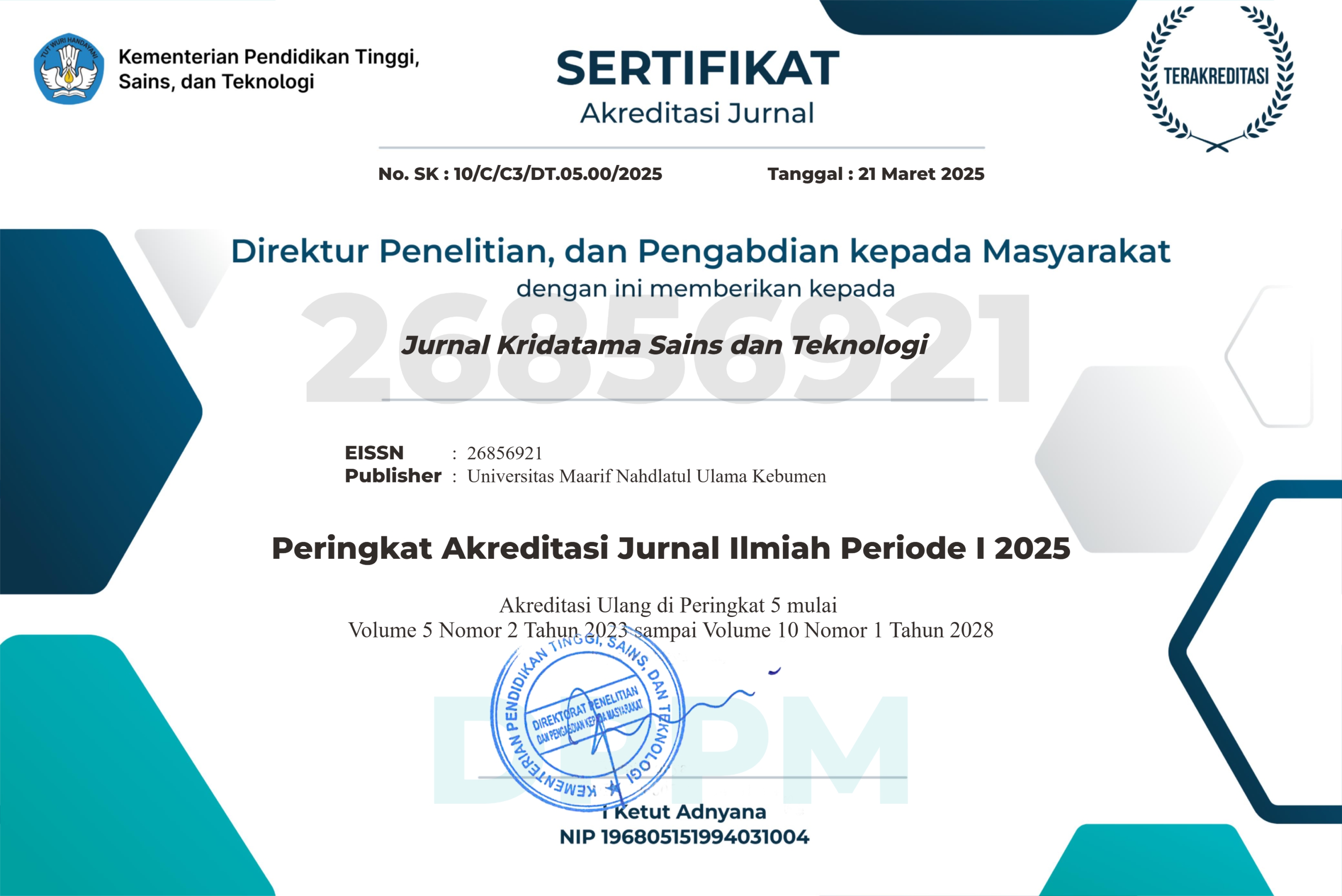Analisis Debit Potensial dan Kualitas Air Tanah Dangkal di Sub DAS Kasin Kota Malang
DOI:
https://doi.org/10.53863/kst.v6i02.1438Keywords:
Kasin Sub Catchment, Groundwater, Groundwater Quantity and Quality, Pollution Index, WQI.Abstract
Malang City is the second largest city in East Java. Rapid population growth changes the city of Malang from an agrarian to a residential and industrial area. This has resulted in increased pressure on groundwater conditions both in quantity and quality. Groundwater exploitation for the fulfillment of clean water is one of the main factors causing a decrease in shallow groundwater levels. Pressure on the quality of one of them is domestic waste and industrial waste discharged on the ground surface. The Kasin sub-watershed area of Malang City is a basin area in the middle of a dense urban settlement and industry. Runoff flowing water gathered into one in the Kasin River so that this condition is vulnerable to pollution of surface water and groundwater. The research methods used include survey, geoelectric measurements, water sampling, laboratory testing, and data processing using the Darcy to calculate groundwater potential, Water Quality Index (WQI) method and Pollution Index to determine groundwater quality against land use change. Based on the results of the observations carried out, the research area is included in the Malang Tuff Formation (Qvtm) with a resistivity value range of 3.4–389 Ωm resulting in rock layers consisting of top soil, clay, tufa, sandstone tuft, pumice tuft, and breksi tuft. From the geoelectric point, 2 passes were made to obtain a hydraulic slope that illustrates the potential of groundwater in the study area of 0.340 – 8.273 l/second. Based on the results of the calculation, the shallow groundwater pollution index is classified as light to moderately polluted. Meanwhile, with the WQI method, water is very bad and not suitable for drinking
References
Badan Pusat Statistik. (2023). Penduduk, Laju Pertumbuhan Penduduk, Distribusi Persentase Penduduk Kepadatan Penduduk, Rasio Jenis Kelamin Penduduk Menurut Kecamatan di Kota Malang, 2023. https://malangkota.bps.go.id/id/statistics-table/3/V1ZSbFRUY3lTbFpEYTNsVWNGcDZjek53YkhsNFFUMDkjMw==/penduduk--laju-pertumbuhan-penduduk--distribusi-persentase-penduduk--kepadatan-penduduk--rasio-jenis-kelamin-penduduk-menurut-kecamatan-di-kota-malang--2023.html?year=2023
Bisri, M. (2012). Studi Tentang Pendugaan Air Tanah, Sumur Air Tanah dan Upaya Dalam Konservasi Air Tanah (Universitas Brawijaya Press, Ed.; 1 ed., Vol. 1). Universitas Brawijaya Press.
Pangestu, B. A., Asmaranto, R., & Yuliani, E. (2022). Studi Potensi Air Tanah dan Karakteristik Hidrokimia Di Desa Pelem, Kecamatan Bungkal, Kabupaten Ponorogo. Jurnal Teknologi dan Rekayasa Sumber Daya Air, 2(2), 209–221.
Ram, A., Tiwari, S. K., Pandey, H. K., Chaurasia, A. K., Singh, S., & Singh, Y. V. (2021). Groundwater quality assessment using water quality index (WQI) under GIS framework. Applied Water Science, 11(2).
Rubaiyn, A., Okto, A., Jahidin, La Ode Sahiddin, La ode Andimbara, & Asfar, S. (2023). Analysis of Groundwater Quality In Areas Surrounding Mining Sites In Kolaka Regency. Jurnal Rekayasa Geofisika Indonesia, 5(01), 1–13.
Todd, D. K., & Mays, L. W. (2005). Groundwater Hydrology (3 ed.). Wiley.
Downloads
Published
How to Cite
Issue
Section
License
Copyright (c) 2024 Emma Yuliani, Andre Primantyo Hendrawan, Prasetyo Rubiantoro, Annida Shafira Wardani, Putu Kalila Shevanya Miasari

This work is licensed under a Creative Commons Attribution-ShareAlike 4.0 International License.
Authors retain copyright and grant the journal right of first publication with the work simultaneously licensed under a Creative Commons Attribution-ShareAlike 4.0 International License that allows others to share the work with an acknowledgment of the work’s authorship and initial publication in this journal

















